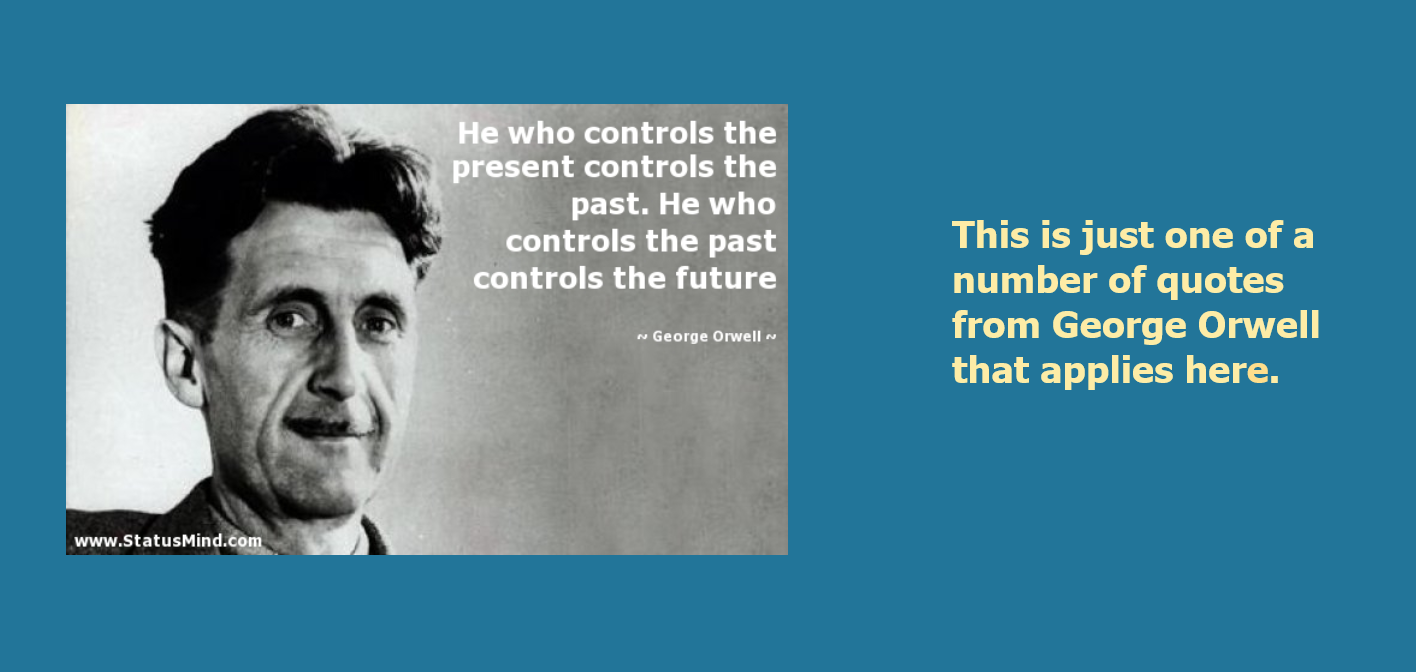The calendar reads 2020 but it sure looks like 1984 (with update)
From the front page of today's Washington Post: "National Archives exhibit blurs images critical of President Trump"

Today’s Washington Post has an important story about how the National Archives is rewriting history:
The large color photograph that greets visitors to a National Archives exhibit celebrating the centennial of women’s suffrage shows a massive crowd filling Pennsylvania Avenue NW for the Women’s March on Jan. 21, 2017, the day after President Trump’s inauguration.
The 49-by-69-inch photograph is a powerful display. Viewed from one perspective, it shows the 2017 march. Viewed from another angle, it shifts to show a 1913 black-and-white image of a women’s suffrage march also on Pennsylvania Avenue. The display links momentous demonstrations for women’s rights more than a century apart on the same stretch of pavement.
But a closer look reveals a different story.
The Archives acknowledged in a statement this week that it made multiple alterations to the photo of the 2017 Women’s March showcased at the museum, blurring signs held by marchers that were critical of Trump. Words on signs that referenced women’s anatomy were also blurred.
The Post contacted prominent historians for their view:
"There's no reason for the National Archives to ever digitally alter a historic photograph," Rice University historian Douglas Brinkley said. "If they don't want to use a specific image, then don't use it. But to confuse the public is reprehensible. The head of the Archives has to very quickly fix this damage. A lot of history is messy, and there's zero reason why the Archives can't be upfront about a photo from a women's march."
Wendy Kline, a history professor at Purdue University, said it was disturbing that the Archives chose to edit out the words "vagina" and "pussy" from an image of the Women's March, especially when it was part of an exhibit about the suffragist movement. Hundreds of thousands of people took part in the 2017 march in the District, which was widely seen as a protest of Trump's victory.
"Doctoring a commemorative photograph buys right into the notion that it's okay to silence women's voice and actions," Kline said in an email. "It is literally erasing something that was accurately captured on camera. That's an attempt to erase a powerful message."
I find this action by the National Archives to be very scary. Perhaps our local “newspaper” editor, who has written a couple of columns recently about the importance of knowing history, could bring more attention to the National Archives’ action. (Without an easy way to blame Democrats, Obama, Hillary, or political correctness for this, I doubt that it will happen, however.)
Orwell's sentence before the quote cited above is also relevant: "The most effective way to destroy people is deny and obliterate their own understanding of their history."
Update -- National Archives admits error, vows to correct
From the National Archives:
We have removed the current display and will replace it as soon as possible with one that uses the unaltered image.
We apologize, and will immediately start a thorough review of our exhibit policies and procedures so that this does not happen again.
That's good news but I can't help wondering why it was allowed to happen in the first place. Who ultimately was responsible? Has the National Archives been politicized? I just checked and the Post story has been picked-up by numerous other online sources. Would changes have been made if only a few people had complained? I am glad that this will be corrected but I still find it disturbing.